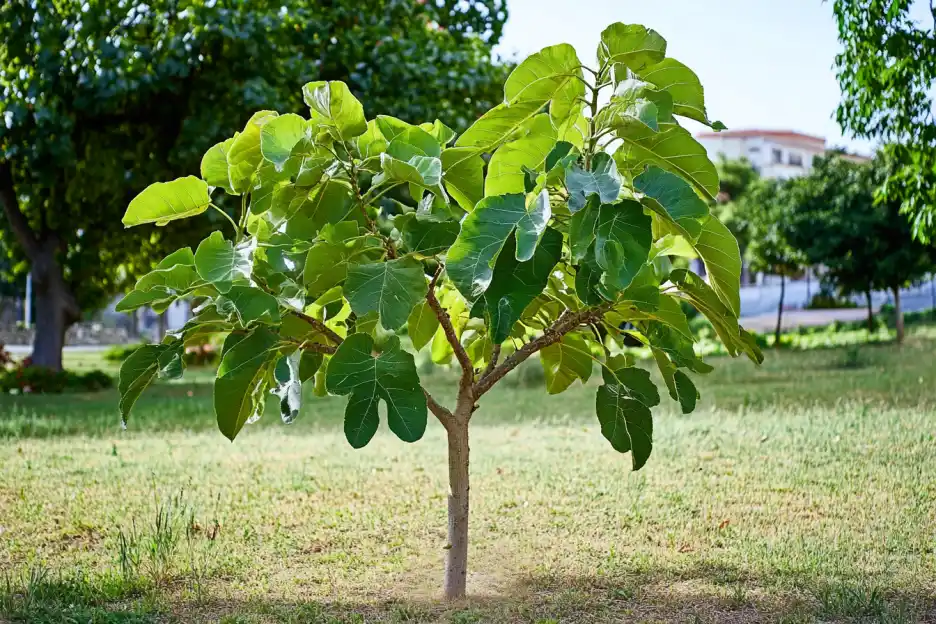Pruning fig trees for optimal harvests is a crucial step in ensuring healthy growth and abundant fruit production. While fig trees are relatively low-maintenance, regular pruning maximizes their yield and keeps them thriving. In this comprehensive guide, we’ll explore why pruning fig trees is essential, the best time to prune, step-by-step techniques, and special tips for cold climates.
1. Why Pruning Fig Trees is Essential
Pruning isn’t just about keeping your fig tree looking neat—it plays a vital role in the tree’s overall health and productivity. Without proper pruning, fig trees can become overgrown, leading to reduced fruit yield and vulnerability to disease.
1.1. Benefits of Regular Pruning for Health and Productivity
Pruning promotes healthy growth by removing dead or diseased wood, improving airflow, and allowing sunlight to penetrate the tree’s canopy. This reduces the risk of fungal diseases and pests that thrive in dense, shaded areas. Regular pruning also helps the tree focus its energy on producing fruit, rather than supporting excess foliage.
- Health: Removing unhealthy or crossed branches prevents the spread of diseases and pest infestations.
- Vigor: Pruned trees grow stronger, focusing their energy on developing quality fruit rather than growing unnecessary branches.
1.2. How Pruning Improves Fruit Production
Pruning plays a key role in enhancing fruit production. By shaping the tree and removing unproductive branches, you encourage new growth and increase the number of fruit-bearing branches. This means more energy goes into producing bigger and better figs.
For those interested in container gardening, consider reading about the 6 best fruits to grow in pots and containers, which includes tips on maximizing fruit yield in small spaces.

2. When to Prune Your Fig Trees
The timing of pruning is critical to achieving the best results. Different types of pruning should be done at specific times of the year to ensure the tree remains healthy and productive.
Timing for Different Types of Pruning (Early Summer, Mid-Autumn)
- Early Summer Pruning: Light pruning in early summer helps shape the tree and removes unwanted growth, especially suckers (shoots that grow from the base). This type of pruning keeps the tree manageable while ensuring enough growth for fruit production.
- Mid-Autumn Pruning: In colder climates, prune in mid-autumn after the tree has gone dormant. This prepares the tree for winter by removing dead or damaged wood, reducing the chances of pest infestations and disease over the cold months.
For more detailed instructions on the best timing and techniques for pruning fig trees, visit this guide on pruning fig trees for optimal growth and harvests.

3. How to Prune Fig Trees
Pruning fig trees may seem intimidating, but with the right techniques, it’s a straightforward process. Here’s a step-by-step guide to help you master the art of pruning.
3.1. Step-by-Step Guide to Pruning Techniques
- Inspect the Tree: Before you begin, check the tree for dead, diseased, or damaged wood. Look for branches that are crossing or rubbing against each other, as these can lead to wounds that invite disease.
- Remove Dead Wood: Cut away any dead or diseased branches first. Use clean, sharp pruning shears to make precise cuts, reducing the risk of further infection.
- Thin the Canopy: Open up the center of the tree by removing crowded branches. This allows sunlight to reach the interior of the tree, improving fruit development.
- Shape the Tree: Prune to shape your tree. Depending on your preference, you can train your fig tree into a bush, tree, or even an espalier (a fan-shaped pattern).
3.2. Removing Suckers and Unwanted Branches
Suckers are vigorous shoots that grow from the base of the tree. While they may look healthy, they divert energy away from fruit production. Regularly remove suckers and other low-growing branches that don’t contribute to the tree’s overall structure. This helps direct nutrients to the fruit-bearing branches.
3.3. Pruning for Shape: Bush, Tree, Fan Training
- Bush: Pruning fig trees into a bush shape is ideal for small spaces. This involves removing the main leader (central stem) and encouraging multiple smaller branches to form.
- Tree: To prune your fig tree into a traditional tree shape, focus on maintaining a strong central leader and remove lower branches to create a clear trunk.
- Fan Training (Espalier): This method is perfect for small gardens or growing against walls. Prune and train the branches to grow flat against a structure, maximizing fruit production in a compact space.

4. Special Tips for Cold-Climate Fig Trees
Growing fig trees in cold climates presents unique challenges, but with proper pruning and care, your tree can thrive and produce fruit even in colder regions.
4.1. Winter Protection Techniques
In regions where temperatures drop significantly, winter protection is essential for fig trees. After autumn pruning, wrap your fig tree in burlap or frost blankets to shield it from the cold. Mulch heavily around the base of the tree to insulate the roots.
4.2. Overwintering Potted Figs Indoors
If you’re growing figs in containers, bringing them indoors during winter is the best way to protect them from frost. Before moving the pot, prune back about one-third of the tree to reduce its size and remove any damaged or diseased wood. Place the container in a cool, dark place like a garage or basement, and water sparingly to keep the roots moist during dormancy.
5. Maintenance Pruning for Maximum Fruit Yield
Once your fig tree is established, regular maintenance pruning is key to keeping it productive year after year.
5.1. Pruning to Maximize Main-Crop and Breba Crops
- Main-Crop Figs: These are the primary fruit that develop on new wood each year. Pruning in late winter encourages new growth, which leads to a larger main-crop harvest.
- Breba Crop: This is the early fruit that grows on old wood from the previous year. Light pruning in early summer helps thin the tree without sacrificing the breba crop.
5.2. Ongoing Care and Maintenance
After the primary pruning sessions in winter and summer, inspect your tree regularly throughout the growing season. Remove any suckers or water sprouts (rapidly growing vertical shoots) as soon as they appear. These unwanted growths can sap energy from the tree and reduce fruit production.
6. Common Pruning Problems and Solutions
Pruning is essential, but sometimes things can go wrong. Whether you’ve neglected your tree or pruned too late, there are solutions to common pruning problems.
6.1. Addressing Overgrown or Neglected Fig Trees
If your fig tree has been neglected and grown out of control, don’t worry—you can bring it back with proper pruning. Start by removing all dead, diseased, and weak branches. Then gradually thin out the canopy to allow sunlight to reach the interior of the tree. Over the next few seasons, continue shaping the tree and removing excess growth.
6.2. What Happens if You Skip Pruning?
Skipping pruning can lead to an overgrown tree with poor air circulation, making it more susceptible to pests and diseases. The fruit yield will decrease, and the size of the figs will likely be smaller. Regular pruning ensures your fig tree remains healthy and productive for years to come.
Frequently Asked Questions
How Long Until My Fig Tree Produces Fruit?
Fig trees typically begin producing fruit in 2-3 years after planting. However, depending on the variety and growing conditions, some trees may take up to five years to produce a full harvest.
What Are the Most Productive Fig Varieties?
Some of the most productive fig varieties for home gardens include ‘Brown Turkey’, ‘Celeste’, and ‘Chicago Hardy’. These varieties are known for their cold hardiness, high yields, and ability to thrive in various climates.
Pruning fig trees is essential to maintaining their health, shape, and fruit production. By following the techniques outlined in this guide, you’ll enjoy a productive fig tree that provides bountiful harvests year after year. With the right care and regular pruning, your fig tree can thrive in a wide range of climates and growing conditions.

